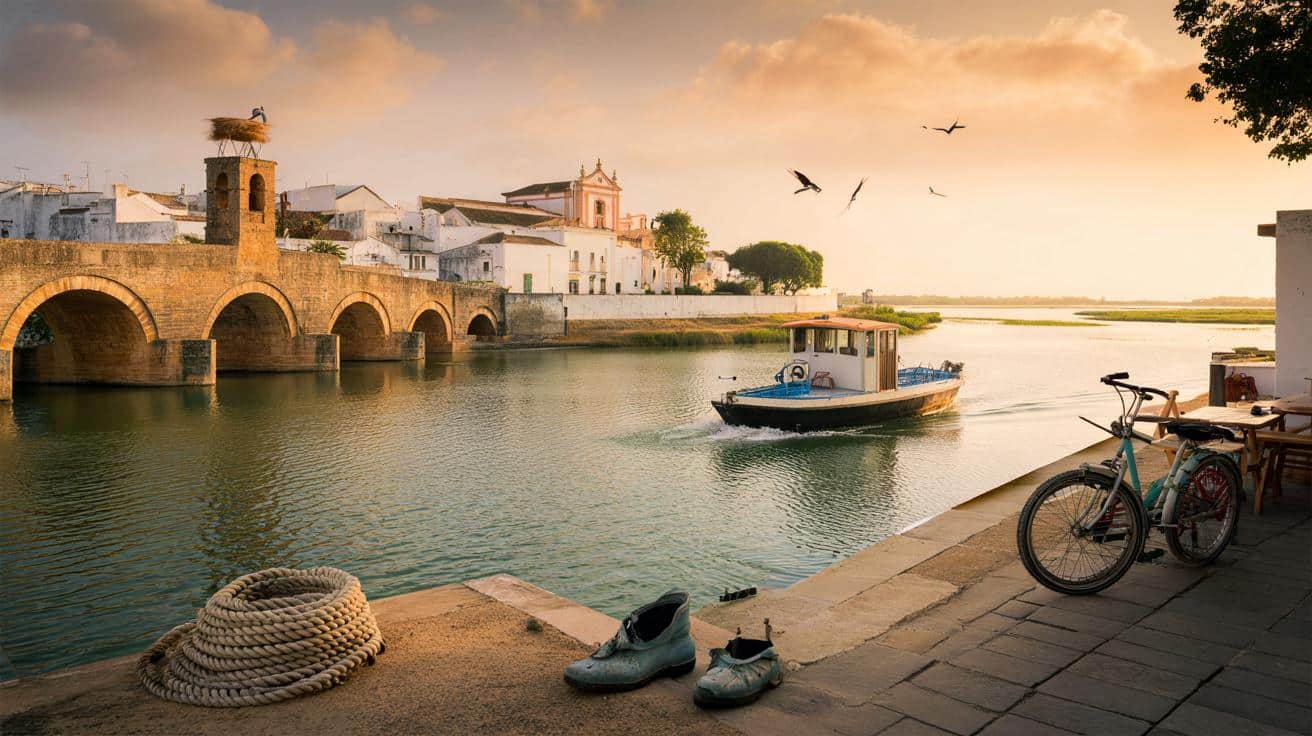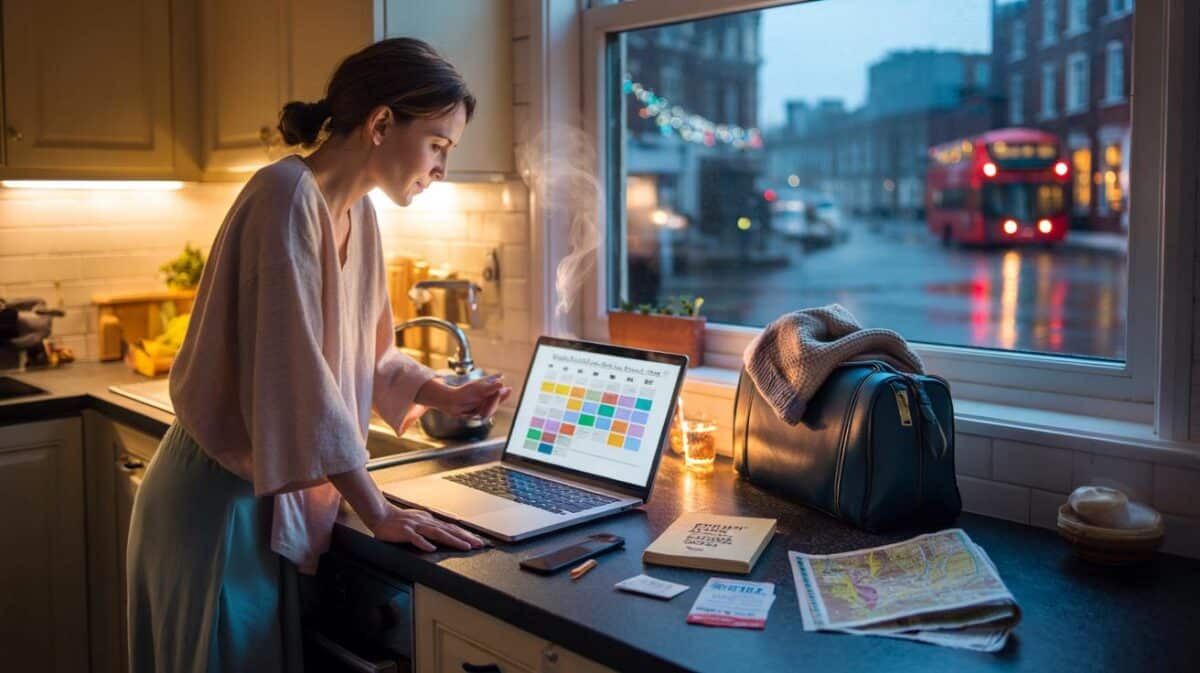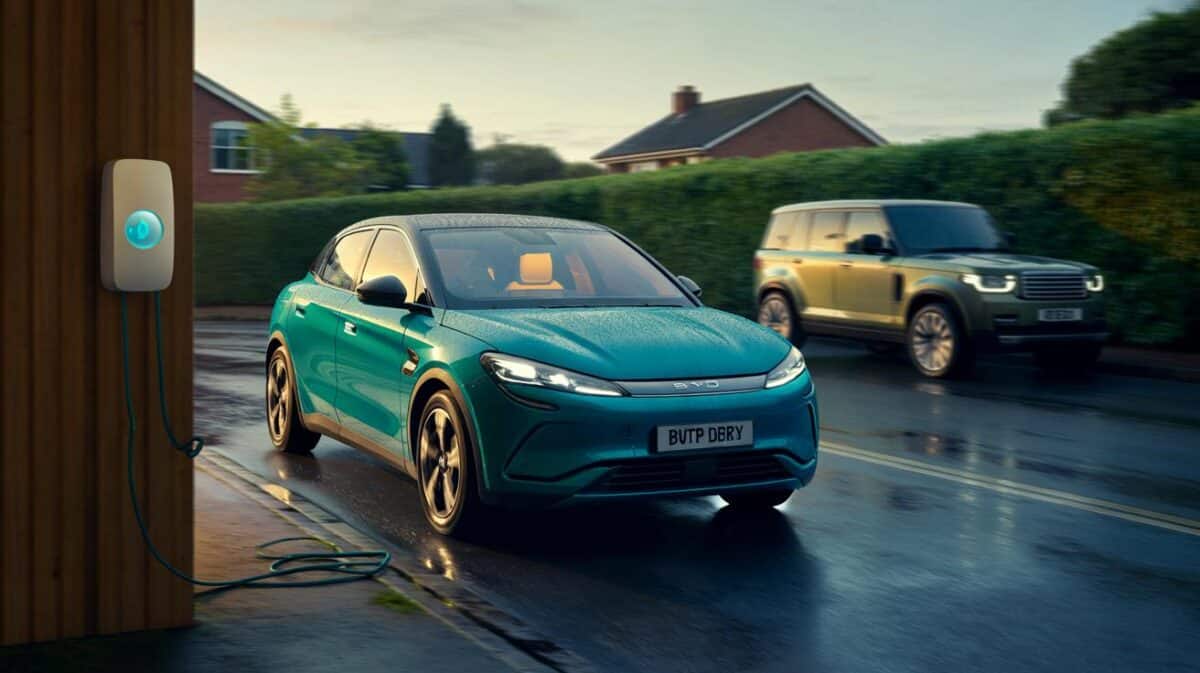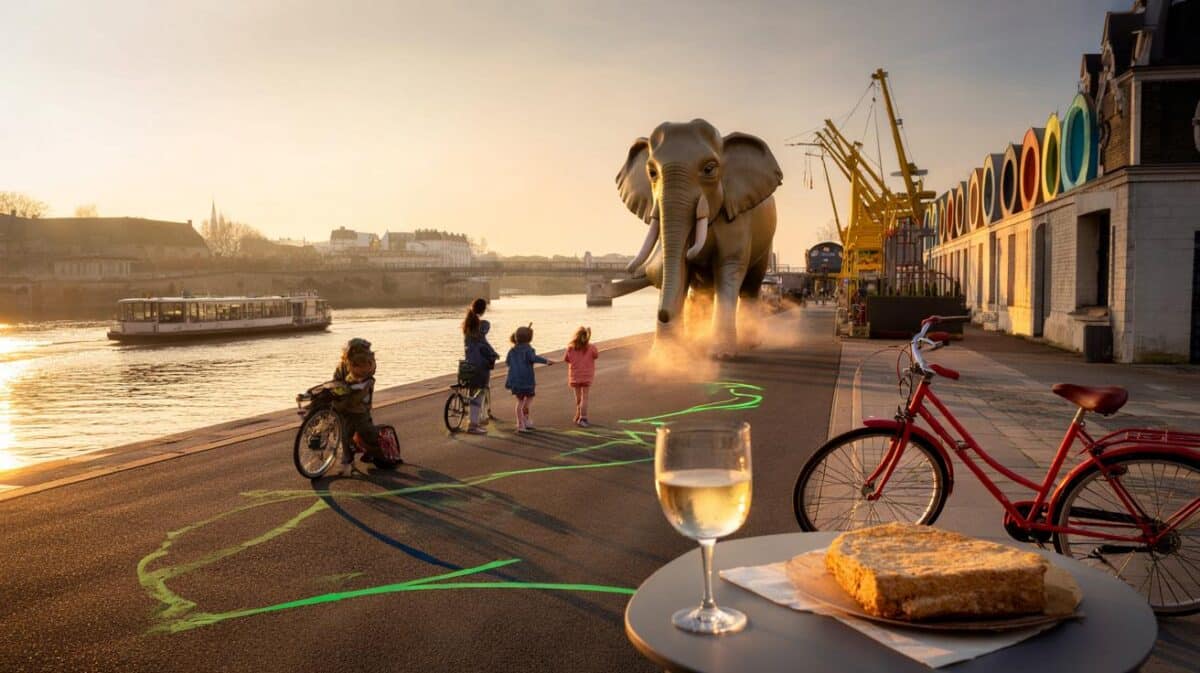Each left a mark. Yet my return ticket keeps pointing east of Faro, to the quiet town where storks nest on chimneys and lunch tastes faintly of the sea.
It starts with the soft slap of tide against stone at first light. The fish market shutters rise, a ferry coughs, and the day pads forward in sandals. *The ferry horn cuts through the morning hush.* I watch an old man coil a rope, his hands white with salt, as schoolkids cycle past a baroque church tiled like a jewellery box. Somewhere, an espresso snaps to life. I come back for mornings like this. It still surprises me.
The Portuguese place I can’t quit
Tavira doesn’t shout. It drifts in — azulejo-bright houses, a Roman bridge over slow water, and a lazy tide that smooths the town’s edges. The air smells of coffee, grilled fish and warm stone. You arrive and feel your shoulders drop without asking permission.
I’ve fallen for Lisbon’s miradouros and Porto’s cellar glow. I’ve hiked the Ponta de São Lourenço and steam-bathed in Furnas on São Miguel. Yet in Tavira, a tiny ferry to **Ilha de Tavira** turns into a ritual. Ten minutes across a glittering channel and you’re padding onto eleven kilometres of sand that hush your head. One afternoon I watched a line of storks tilt over the salt pans, then ate octopus in Santa Luzia that tasted of fire and tide. A simple day, somehow perfect.
If you crave a centrepiece, Tavira won’t do it. It’s a mosaic. Small squares of quiet joy — the knock of a petanca game by the castle, a pianist noodling at sunset, fishermen’s boots drying on a step. The logic is simple: micro-moments build a bigger story, and repetition becomes its own pleasure. You can know this town in two days, yet it takes years to learn it.
How to make Tavira yours
Arrive by train from Faro and you roll into town in under 40 minutes, fennel-tufted fields flicking past. Stay near Praça da República so your day spirals naturally between the river, the castle gardens and the market. Walk to the ferry at Quatro Águas, then let **Ria Formosa** carry you — a protected maze of lagoons stretching roughly 60 kilometres of bird-murmur and soft light.
Go in late spring or September when the sun is kind and the beaches breathe. Hire a bike to trace the Ecovia do Litoral east towards Cabanas, then stop for an espresso the size of your thumb. Let’s be honest: no one actually does this every day. You’ll nap, read, swim, repeat. And that’s fine. The Algarve averages around 300 days of sunshine a year, and Tavira gives you the bright bits without the loud tan lines.
Skip the rush-hour ferry queues by going early or late; lunch at 3pm and dinner as the sky cools to peach. In Santa Luzia, try octopus three ways and share a clay pot of **octopus rice** instead of ordering plates you won’t finish.
“Tavira has that slow-tide energy,” a local guide told me. “You don’t push your day here. You let it come to you.”
- Best months: May–June, September–October for warm seas and calmer streets.
- Go-tos: Ilha de Tavira for dunes, Barril for the anchor cemetery and a sunset drink.
- Small splurge: a Ria Formosa boat at golden hour — birds, gilded water, quiet awe.
Why here, again and again
We’ve all had that moment when a place feels like it’s waiting for you. Tavira is mine. I come back for the sound of cutlery on tiled patios and the way the river tints the light green-blue before dusk. I come back because time smudges here; a morning stroll somehow turns into a day.
The repeat magic isn’t mystery. It’s scale. Tavira is big enough for curiosity, small enough for comfort. You can wander into new alleys and still wave to the same baker. No big-ticket must-do breathing down your neck. Just a gentle promise: if you slow down, life tastes better.
On my last trip, I bought a paperback at a corner shop and finished it in a week of swims, naps and grilled sardines. The plot barely mattered. The rhythm did. Tavira teaches you that ease isn’t laziness — it’s a skill you practise.
There’s also this: travel guilt fades here. Fewer queues, softer footprints, money in local hands. The salt pans still sparkle, the storks still orbit the chimneys, the ferry still knocks the quay with a friendly nudge. I’m not done with Lisbon or Porto. I just know where my compass settles for now.
| Point clé | Détail | Intérêt pour le lecteur |
|---|---|---|
| Rituals over checklists | A ferry to Ilha de Tavira, a market espresso, a sunset walk | Easy structure for low-stress days |
| Best timing | May–June and September–October for warm seas and calmer streets | Fewer crowds, better light, nicer swims |
| Where to base | Near Praça da República for river, castle and market access | Walkable core, no car faff |
FAQ :
- Is Tavira good for a long weekend?Yes. Three days lets you ferry to the island, explore the old town, and take a Ria Formosa boat at golden hour.
- How do I get there from Faro Airport?Train via Faro city (about 40 minutes) or a 35–40 minute drive along the A22. Taxis and rideshares are easy.
- Which beach should I pick first?Start with Ilha de Tavira for big, open dunes. Try Barril for the photogenic anchor cemetery and a breezy beach bar.
- Will I need a car?Not in town. A bike and the local train cover a lot. Rent a car only if you’re hopping to other Algarve towns.
- What should I eat?Octopus in Santa Luzia, grilled sardines by the river, and a pastel de nata with a short, sharp bica.








